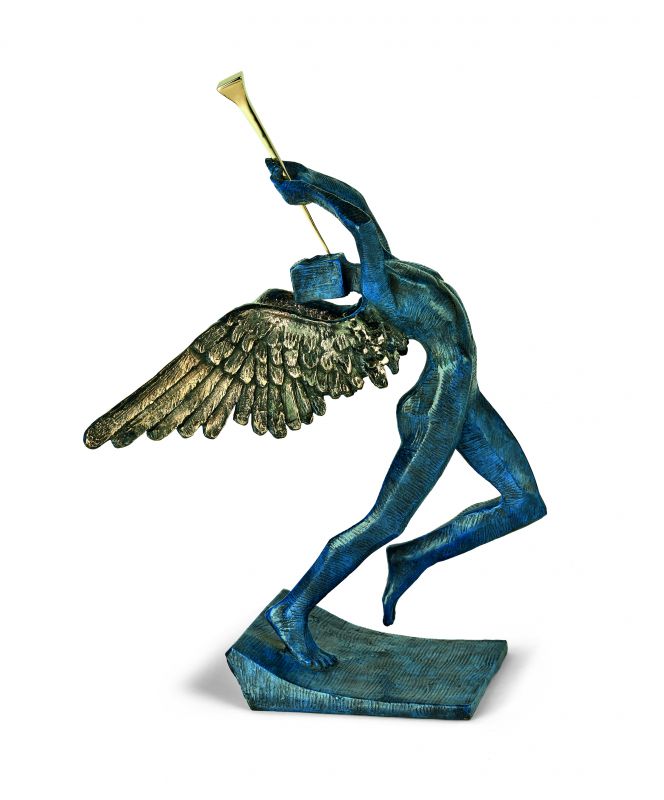Dali
Triumphant Angel
Bronze, 50 cm
Chat with us on WhatsApp
About the artwork
Religious imagery fascinated and intrigued Dalí throughout his lifetime. For Dalí, angels expressed grace, nobility and lightness. Dalí once said “nothing is more stimulating than the idea of an angel!” The face and trumpet in the sculpture echo the Cubist style pioneered by Pablo Picasso, who Dalí admired. It is interesting that Cubism and Surrealism co-exist in this sculpture. From the 1940s, when Dalí began weaving strong religious themes into his artworks, angels appear frequently in his oeuvre. Dalí rejected his family’s Catholicism early in life, only to re-embrace it again in later years. For Dalí, angels represented divine awareness, purity, protection and illumination. The key element of the sculpture is the trumpet, it links heaven and earth, bringing and reflecting divine light. The angel’s wings are in perfect equilibrium, referencing Dalí’s obsession with geometrical precision. This sculpture embodies Dalí’s idea of heavenly achievement and aspiration.
About the artist
Born on May 11, 1904, in Figueres, Spain, Salvador Dalí’s
eccentric nature and talent for self-promotion made him the most famous
representative of the surrealist movement and one of the most widely recognised
artists in the world. Identified as an artistic prodigy from a tender age, Dalí attended the drawing school at the Colegio de Hermanos Maristas and the
Instituto in Figueres, Spain in 1916. In 1922, he enrolled in the Academia de
San Fernando in Madrid and received recognition during his first solo show
held in Barcelona in 1925. Dalí became internationally known after the third
annual Carnegie International Exhibition in Pittsburgh in 1928 and grew to
immense notoriety and fame. Today, his sculptures and paintings are exhibited
in the most prestigious museums in the world and part of many coveted private
and public collections.
Go to Dali's profile ›


